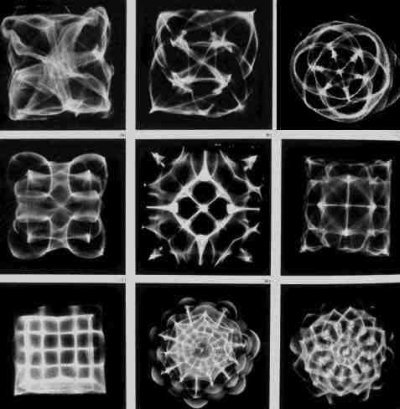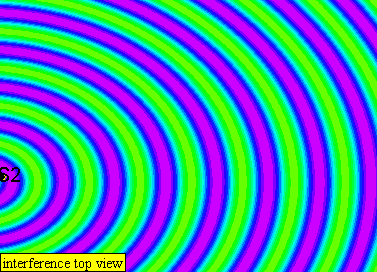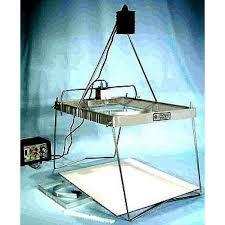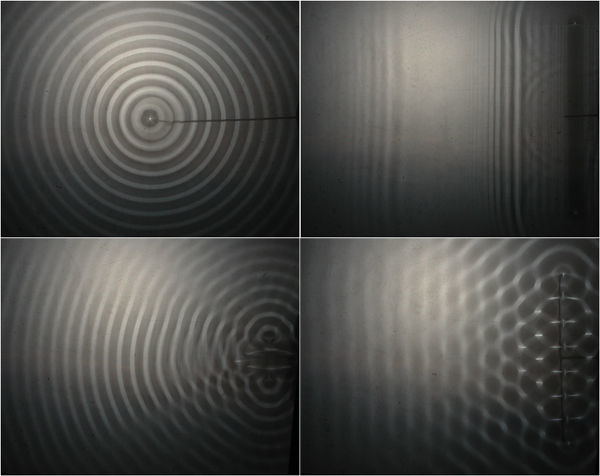Difference between revisions of "* Patterns and Algorithms *"
| Line 27: | Line 27: | ||
| − | ''Cymatics, from Greek: κῦμα, meaning "wave", is a subset of modal vibrational phenomena. The term was coined by Hans Jenny (1904-1972), a Swiss follower of the philosophical school known as anthroposophy. Typically the surface of a plate, diaphragm or membrane is vibrated, and regions of maximum and minimum displacement are made visible in a thin coating of particles, paste or liquid. | + | ''Cymatics, from Greek: κῦμα, meaning "wave", is a subset of modal vibrational phenomena. The term was coined by Hans Jenny (1904-1972), a Swiss follower of the philosophical school known as anthroposophy. Typically the surface of a plate, diaphragm or membrane is vibrated, and regions of maximum and minimum displacement are made visible in a thin coating of particles, paste or liquid. Different patterns emerge in the excitatory medium depending on the geometry of the plate and the driving frequency.'' |
| + | |||
| + | [[File:ripple2.jpg|600px]] | ||
Revision as of 20:16, 30 October 2016
Patterns & Algorithms
--
Research
'Informally, an algorithm is any well-defined computational procedure that takes
some value, or set of values, as input and produces some value, or set of values, as
output. An algorithm is thus a sequence of computational steps that transform the
input into the output.'
Cymatic Patterns
Cymatics, from Greek: κῦμα, meaning "wave", is a subset of modal vibrational phenomena. The term was coined by Hans Jenny (1904-1972), a Swiss follower of the philosophical school known as anthroposophy. Typically the surface of a plate, diaphragm or membrane is vibrated, and regions of maximum and minimum displacement are made visible in a thin coating of particles, paste or liquid. Different patterns emerge in the excitatory medium depending on the geometry of the plate and the driving frequency.
Ripple Tank
A ripple tank is a shallow glass tank of water used in schools and colleges to demonstrate the basic properties of waves.




